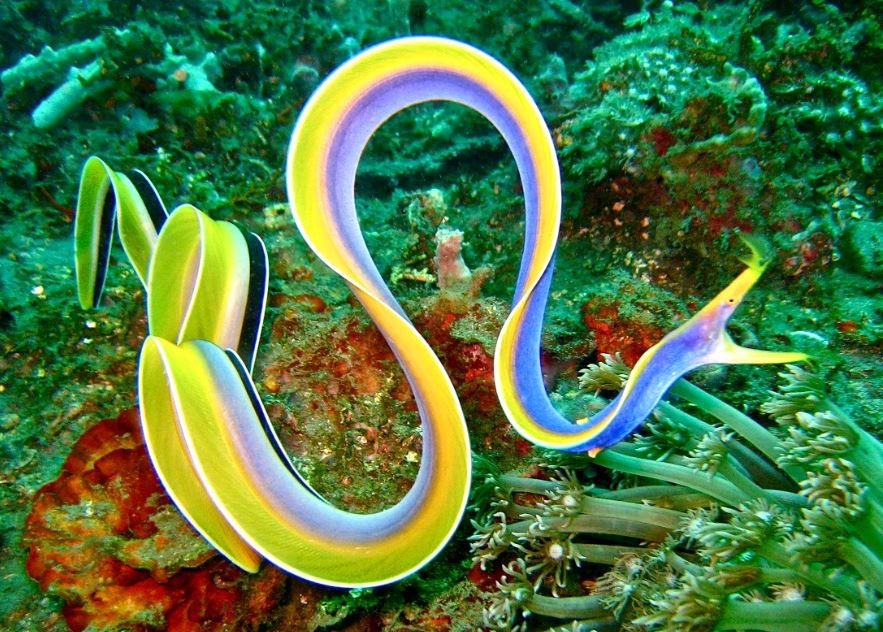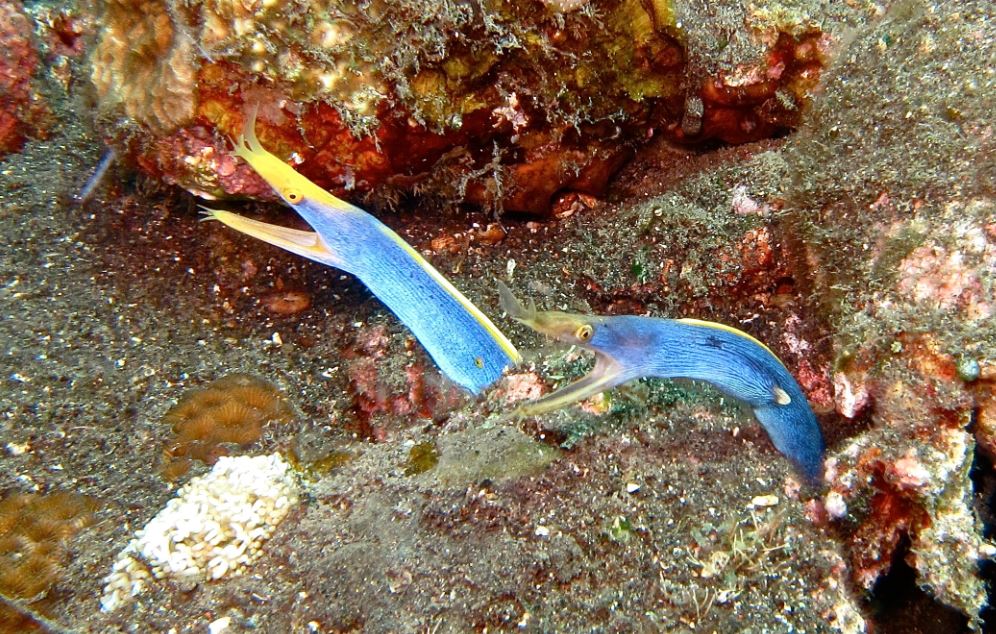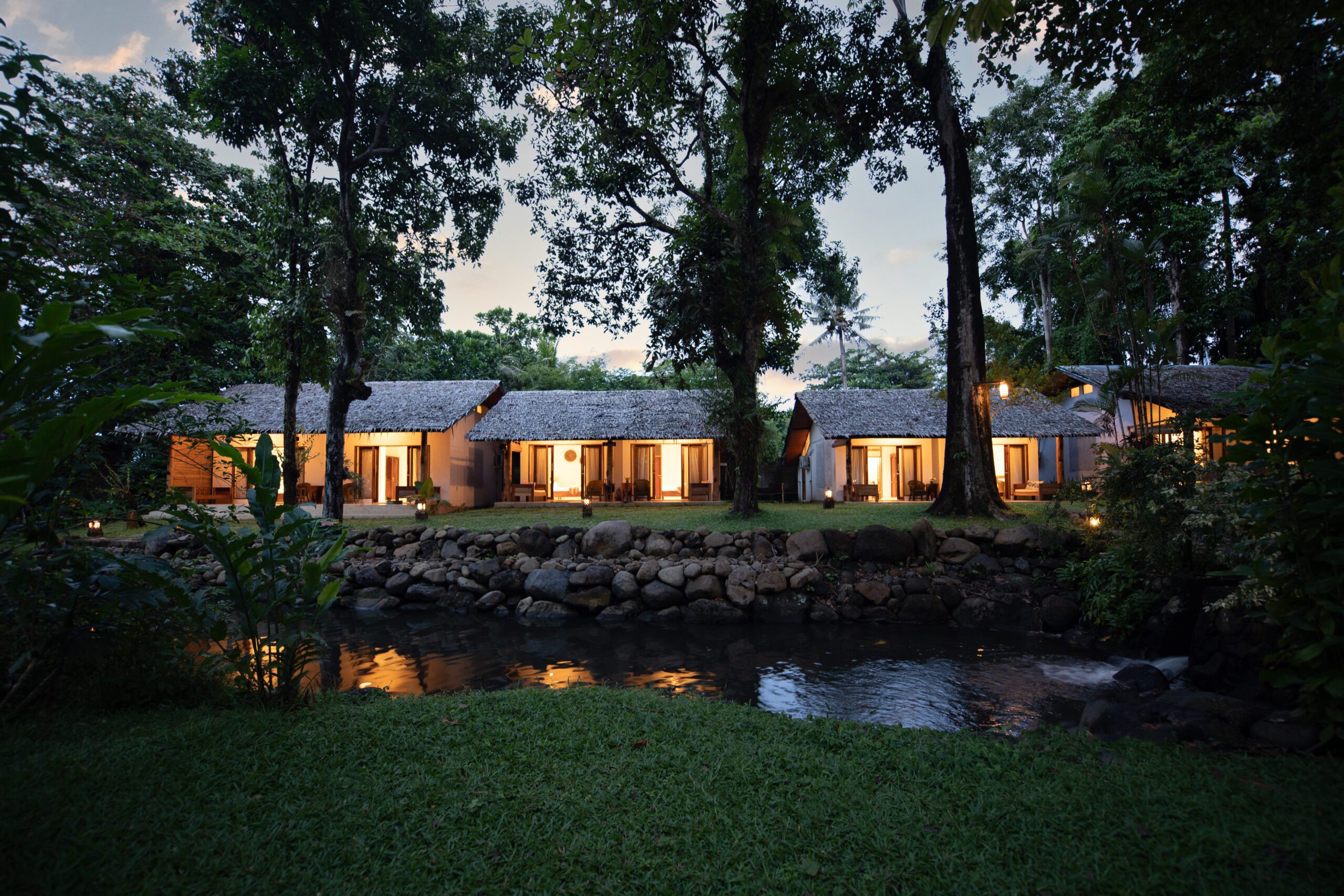
Forget Traditional Pink
BLUE is for Boys and YELLOW is for Girls…..
No, we are not talking about this year’s fashionable wetsuit or fin colors – we are talking about Ribbon Eels!
How many times have you heard divers coming back from dives talking about the blue ribbon eel that they spotted or the small black ribbon eel that they were trying to entice out of its hole? What many people don’t understand is how these different colors signify the different ages of ribbon eels – and yes, their gender too!
Unlike some marine species such as cuttlefish and leaf scorpionfish, ribbon eels do not change color to blend into their surroundings or because they are displaying mating or defensive behaviors, they change color with age and their gender changes too!

Ribbon Eel Life Stages:
Stage 1: Non-Gender Specific
Ribbon eels begin life as juveniles which are easily recognized by the bright yellow dorsal fin which runs the length of their dark, black bodies.
Stage 2: Midlife and Male
As the eel matures the black changes to a bright, electric blue with an equally vivid yellow dorsal fin; this marks the male stage of its life.
Stage 3: Mature and Female
The eel continues to grow and at approximately 1.3 meters / 4 feet its colour changes again, this time to yellow, and the eel enters its female stage where upon it is able to lay eggs.
Where to Find Ribbon Eels
Ribbon eels are found predominantly on healthy coral reefs but they also seem to do well on damaged reefs too where they favor sand and rubble areas. They are frequently found hiding under rocks and ledges or buried in the sand with just their heads and upper body visible – it is quite a special sight to see the entire length of a ribbon eel at any stage of its life cycle.
We have also noticed that the juvenile black phase eel is more regularly spotted on sandy and rubble patches whilst the electric blue male and yellow female are seen with more frequency at our dive sites that have a higher density of coral. This may be due to migration as the eel matures and has a need for more food (nutrition) as it develops from juvenile to adult.
The best time to see ribbon eels is on night dives as they are nocturnal hunters. Sunset dives are when they are becoming active and give the best opportunity to see them out of their hiding places and swimming in the open water.

Ribbon Eel Descriptions
Ribbon eels all have long protruding nostrils which are almost seahorse-like in appearance and are used to sense vibrations in the water. As with moray eels, divers often mistake ribbon eels as being aggressive as they are commonly seen with their mouths widely opening and closing in what could be interpreted as a threatening manner when they are in fact just breathing.
Ribbon eels, like other species of eel, do not have gill covers to push water over their gill systems, instead, this is a manual function assisted by their opening and closing their mouths.
Ribbon Eel Swimming
Like other eels, ribbon eels do not possess pelvic fins or pectoral fins which means they have a highly distinct method of moving through the water. Eels swim through the water by moving their whole body in a wave-like motion. This movement is called an undulation. They do possess both dorsal and anal fins which are elongated and are essential to stabilizing the eel as it swims. Ribbon eels are also capable of swimming backward by reversing their pattern of undulations.
Ribbon Eel Life Span & Diet
Despite their slender bodies ribbon eels have an incredible lifespan of up to 20 years and can grow to over one meter in length. Ribbon eels are carnivores and their diets consist of shrimps and small fish.
Ribbon eels do not appear to be seasonal and can be seen at all three of our resorts in North Sulawesi. Some of our best sites for seeing ribbon eels include Sahaung and Paradise Pier in Bangka; Circus and Tanjung Bulo in Manado; and Angels Window and Nudifalls in Lembeh – where they have even been known to be spotted out swimming!

So now you know a little bit more about these amazing little eels maybe you’re feeling inspired to come and see some for real! For more information about all three of our dive centers and our North Sulawesi dive packages contact us on reservations@murexresorts.com – or, better still, why not book a place on our Passport to Paradise program which allows you to dive your way around all three of our North Sulawesi destinations – A truly complete diving package!
More marine life facts and photos coming next month so keep checking out our Blogs for updates!
Did you enjoy reading this Blog? You may also like these articles too:




